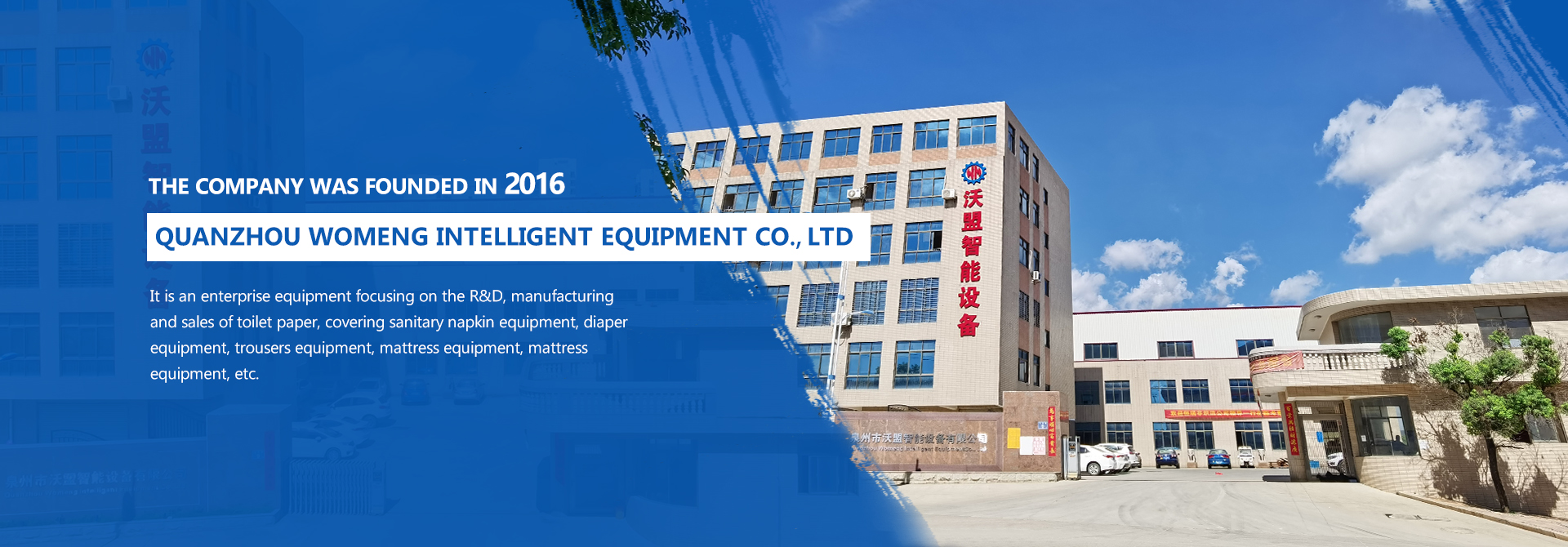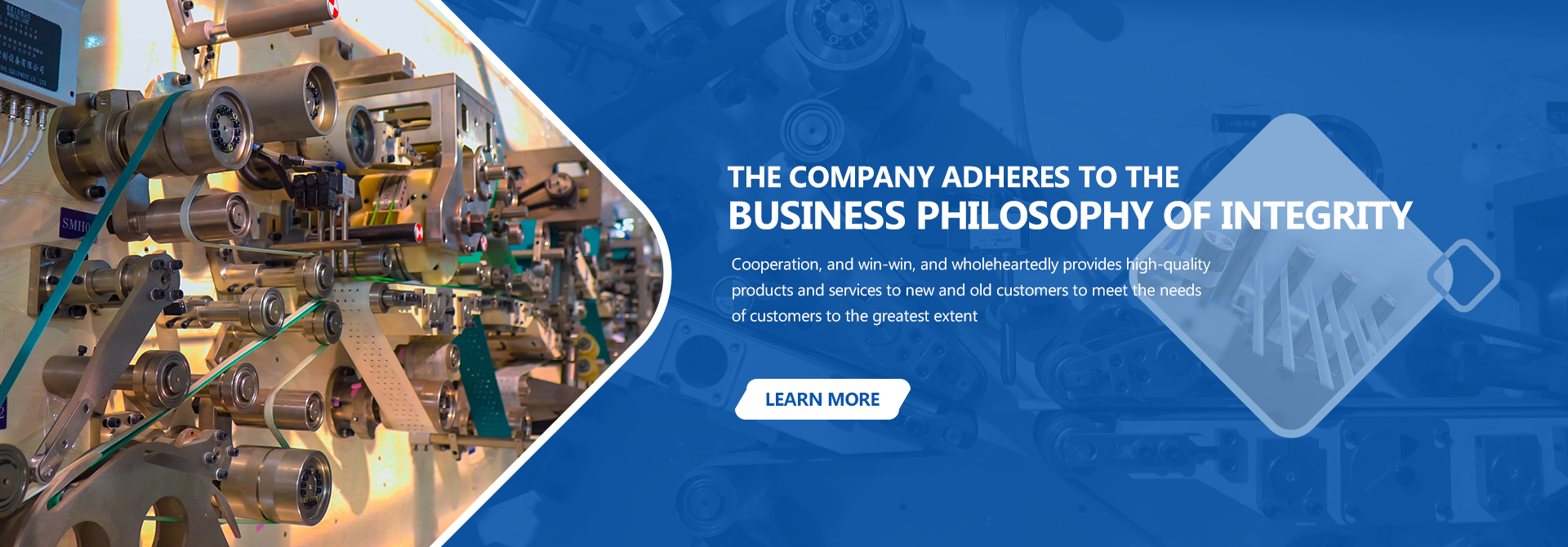In the field of sanitary napkin production, the selection of machine parts is crucial as it directly relates to production efficiency, product quality, and the service life of equipment. The following are several key aspects to consider when choosing parts for sanitary napkin machines:
I. Raw Material Conveying and Processing Components
(I) Conveyor Belt
The conveyor belt is a key component for transporting raw materials to various production stages. For sanitary napkin production machines, a conveyor belt with a smooth surface, wear resistance, and a certain degree of flexibility should be selected. For example, a conveyor belt made of food-grade polyurethane not only effectively prevents raw materials from getting stuck or scattered during transportation but is also easy to clean and maintain. At the same time, the width and length of the conveyor belt should be determined according to the overall design of the machine and the production scale to ensure a stable and continuous supply of raw materials.
(II) Metering Device
The metering device is responsible for precisely controlling the amount of raw materials put into production, which is essential for ensuring the consistency of sanitary napkin quality. When choosing a metering device, consider its accuracy and reliability. For instance, an electronic weighing metering device can precisely control the usage of raw materials such as cotton and absorbent materials according to preset parameters. The error range can be controlled within a very small range, usually reaching ±[X] grams, effectively avoiding product quality issues caused by inaccurate raw material usage.
II. Forming and Processing Components
(I) Mold
The mold is a key factor in determining the shape and size of sanitary napkins. High-precision and durable mold materials such as high-quality alloy steel should be selected. This material has good hardness and wear resistance and can maintain shape stability during long-term use, ensuring that the produced sanitary napkins have accurate dimensions and consistent appearance. At the same time, the mold design should conform to ergonomic principles and consider female body curves and usage comfort. For example, the curvature and edge shape of sanitary napkins should be carefully designed to improve fit.
(II) Heat Pressing Equipment
Heat pressing equipment is used to firmly bond different layers of materials together. When choosing parts for heat pressing equipment, pay attention to the heating element and pressure control system. High-quality heating elements can heat quickly and evenly, enabling glue or hot melt materials to melt rapidly and achieve good bonding effects. The pressure control system needs to have high-precision adjustment capabilities. According to different materials and types of sanitary napkins, precisely adjust the pressure to ensure that the bonding between each layer of material is tight without damaging the materials.
III. Cutting and Packaging Components
(I) Cutting Tool
The quality of the cutting tool directly affects the cutting quality and production efficiency of sanitary napkins. Sharp and durable tool materials such as high-speed steel or cemented carbide should be selected. These materials can maintain the sharpness of the cutting edge, reduce cutting resistance, and make the cut neat and smooth, avoiding burrs or tearing. At the same time, the design of the cutting tool should consider the shape of sanitary napkins and the cutting method. For example, circular blades or special-shaped cutting tools can be used to meet the production needs of different styles of sanitary napkins.
(II) Packaging Equipment Components
For the packaging stage, the selection of parts should focus on efficiency and stability. For example, for the suction cup grabbing device of the packaging machine, choose a suction cup material with strong suction and durability that can accurately and quickly grab sanitary napkins and place them in packaging materials. In addition, the temperature control system and pressure adjustment system of the sealing device are also crucial. They need to be able to precisely adjust the sealing temperature and pressure according to different packaging materials (such as plastic film or paper packaging) to ensure good packaging sealing and prevent product contamination.
IV. Automation Control and Detection Components
(I) Sensor
Sensors play a key role in monitoring and feedback in sanitary napkin production machines. In the raw material conveying stage, photoelectric sensors can be installed to detect the presence and position of raw materials to ensure that the conveyor belt does not run idle or get blocked. During the production process, pressure sensors can be installed to monitor pressure changes in stages such as heat pressing and cutting, and detect abnormalities and adjust in time. At the same time, visual sensors can also be used to detect the appearance quality of sanitary napkins, such as detecting whether there are defects on the surface and whether the pattern printing is complete, improving the product qualification rate.
(II) Control System
The control system is the “brain” of a sanitary napkin production machine and determines the degree of automation and stability of the entire production process. Choose an advanced programmable logic controller (PLC) system that can achieve precise control and coordination of each production stage. Through programming, different production parameters such as production speed, temperature, and pressure can be set and adjusted in real time according to the data fed back by sensors. In addition, the control system should also have a user-friendly human-machine interface to facilitate operators to monitor and operate, improving production efficiency and management convenience.
V. Maintenance and Service Components
(I) Lubrication System
Good lubrication is the key to ensuring the normal operation of machine parts and prolonging their service life. Choose a suitable lubrication system and lubricant, such as an automatic centralized lubrication system, which can provide lubrication to key moving parts (such as bearings, gears, etc.) regularly and quantitatively, reducing wear and friction. Lubricants should be selected according to the working environment and requirements of different parts. For example, parts in high-temperature environments can use high-temperature-resistant grease.
(II) Design for Replacement of Wearable Parts
Considering that some parts of the machine will wear and damage during long-term operation, when designing and selecting parts, pay attention to the convenience of replacing wearable parts. For example, design conveyor belt connection structures and mold fixing devices that are easy to disassemble and install so that operators can quickly replace worn parts, reduce downtime, and improve the utilization rate of equipment.
In conclusion, when choosing parts for sanitary napkin machines, multiple factors such as production process requirements, product quality standards, production efficiency, and maintenance should be comprehensively considered to ensure that the selected parts can cooperate with each other to form a stable and efficient production system and provide a strong guarantee for producing high-quality sanitary napkins.
Above, WOMENG Intelligent Equipment will solve for you once and for all!
WOMENG as a leader in the industry, focusing on the research and development, production, and sales of adult diaper production equipment. We deeply understand that only by providing excellent products and services can we win the trust and support of customers.
Post time: Nov-07-2024




